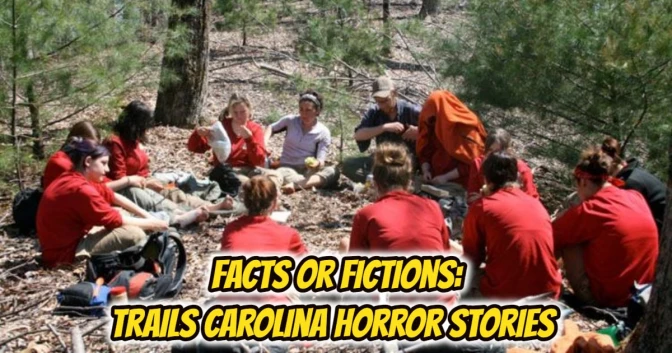
Introduction
Trails Carolina, a wilderness therapy program nestled in the scenic landscapes of North Carolina, has long been lauded for its therapeutic approach to helping troubled teens find their way back to a healthier, more balanced life. With a strong emphasis on nature, adventure, and personal growth, it’s no wonder that many parents turn to this program as a beacon of hope for their struggling children. However, behind its picturesque facade, Trails Carolina has faced its share of controversies and horror stories that shed light on the darker side of wilderness therapy. In this article, we will delve into some of these unsettling accounts to better understand the challenges and potential pitfalls associated with programs like Trails Carolina.

The Isolation Room
trails carolina horror stories One of the most alarming stories to emerge from Trails Carolina involves an isolation room where unruly or non-compliant teens were allegedly placed as a form of punishment. These stories paint a chilling picture of isolated and vulnerable adolescents left to fend for themselves in the wilderness, sometimes for days on end. Advocates for wilderness therapy argue that such isolation rooms are a necessary measure to protect both the troubled teen and the staff, but critics argue that it can border on cruel and inhumane treatment.
MUST READ=trails carolina horror stories
MUST READ=Trails carolina investigation reviews
Lack of Proper Regulation
trails carolina horror stories One recurring issue in the wilderness therapy industry is the lack of consistent and comprehensive regulation. While Trails Carolina claims to adhere to the highest industry standards, it’s not uncommon for some programs to operate without proper oversight. This lack of regulation has raised concerns about the safety and well-being of participants, with parents often finding themselves with limited recourse in the event of issues or abuses.

Allegations of Abuse
trails carolina horror stories Perhaps the most troubling horror stories associated with Trails Carolina revolve around allegations of abuse by staff members. These allegations include physical, emotional, and psychological abuse. Troubled teens have claimed that they were subjected to mistreatment that left lasting scars, both physically and mentally. While Trails Carolina has consistently denied such allegations and maintains that their staff is highly trained, these stories serve as a stark reminder of the potential dangers within the industry.
The High Cost of Treatment
Another aspect that has troubled many families seeking help from Trails Carolina is the exorbitant cost of the program. Wilderness therapy programs are notorious for their hefty price tags, often reaching tens of thousands of dollars. Critics argue that this high cost can create a barrier to access for families who genuinely need help for their troubled teens, leaving them with limited options and sometimes resorting to desperate measures.
Limited Long-Term Follow-Up
While Trails Carolina and other wilderness therapy programs often boast about their success stories, there is a notable lack of long-term follow-up data. Critics argue that this absence of comprehensive data makes it difficult to assess the true effectiveness of these programs. Troubled teens may show improvement during their time in the wilderness, but without sustained support, they may struggle to maintain those positive changes once they return to their everyday lives.

Reliance on Boot Camp Tactics
Some former participants of Trails Carolina have likened their experience to that of a military-style boot camp. While structured and disciplined approaches can be effective for certain individuals, critics argue that this approach may not be suitable for all troubled teens. The fear-based tactics employed by some wilderness therapy programs have been criticized for potentially causing trauma and exacerbating underlying issues.
Conclusion
Trails Carolina, like many wilderness therapy programs, offers a glimmer of hope for families dealing with troubled teens. Its breathtaking natural surroundings and therapeutic approach have the potential to lead to transformative experiences. However, it is crucial to acknowledge the horror stories and controversies that have emerged from programs like Trails Carolina. These stories remind us of the need for rigorous regulation, transparency, and accountability in the wilderness therapy industry.
Ultimately, the decision to send a troubled teen to a wilderness therapy program should be made with careful consideration, research, and consultation with professionals. Parents must weigh the potential benefits against the risks and carefully evaluate the specific program’s track record and practices. While Trails Carolina may have its share of horror stories, it is essential to remember that each case is unique, and what works for one individual may not work for another. The goal should always be the well-being and long-term success of the troubled teen.



